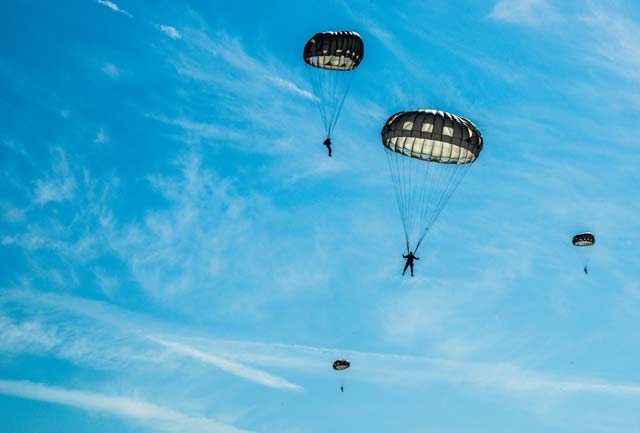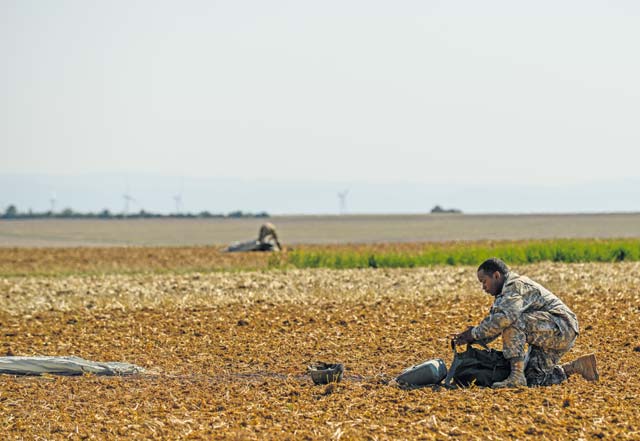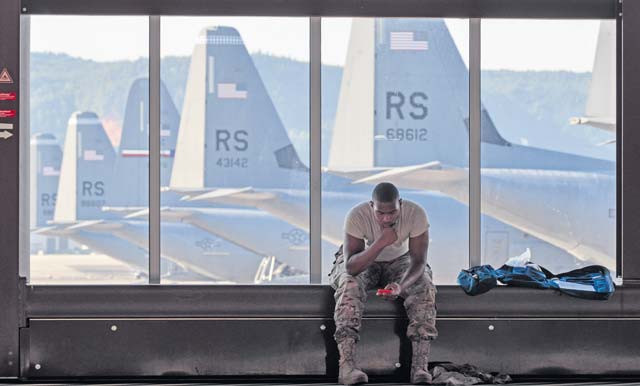
On a dirt road intersection, emergency response vehicles were parked, waiting for what would come in the approaching minutes.
More than 20 Air Force independent duty medical technicians, security forces members and Army Special Forces paratroopers descended from a roaring 86th Airlift Wing C-130J Super Hercules onto the Alzey drop zone in Germany after opening their parachutes.
Once on the ground, the responders moved with haste to what could be the most crucial moment of their wingman’s life.
Medical responders trained Aug. 31 on medical and casualty evacuation procedures to stay current and ready at all times.
U.S. Air Force Tech. Sgt. Jose Obregon, 435th Contingency Response Support Squadron NCOIC of medical operations, and Carlos Rodriguez, 86th Medical Group simulation coordinator, led the Airmen and Soldiers through the training which tested them on their ability to jump from a C-130J and quickly arrive at an accident scene where a simulated patient needed immediate care.
Upon arrival to the 435th Contin-gency Response Group, IDMT and security forces members are immediately qualified with Tactical Combat Casualty Care training. The frequent exercises enhance contingency response abilities and first responder skills.
“We like to be put in the worst case scenario under as much stress as possible to test our abilities,” Obregon said. “The 435th CRG is full of different Air Force specialty codes, so it is important to understand each other’s jobs. We normally jump with only one medic, and it is unrealistic to have that medic with each squad. So everyone is given the best medical training to fill that role for combat situations.”
According to Obregon, the training emphasizes making the best decision at the right time. Even the best medicine can be deadly at the wrong time, for example, providing medical care while under fire when the responder should be taking cover or firing back.
Special Forces Soldiers attached and communicated with squad leaders from the 435th Security Forces Squadron.
“I was only expecting the jump,” said U.S. Army Spc. Patrick Fetterman, 1/10th Special Forces Group member. “When we got on the ground the medical simulator was very lifelike, which was a good experience. I don’t usually get to jump with the Air Force so it’s good to see what they do in this type of situation.”
U.S. Air Force Staff Sgt. Jordan Lucey, 435th SFS member, not only agreed that the simulated environment was very lifelike but also emphasized the importance of repetition when it comes to experience with medical emergencies.
“You don’t know it all,” Lucey said. “You get out here after learning certain things and you may not remember them immediately, but they become second nature with practice.”
Practice with medical emergencies can be the difference in saving the life of an injured service member and can increase the ability to provide rapid global air support at a moment’s notice.





